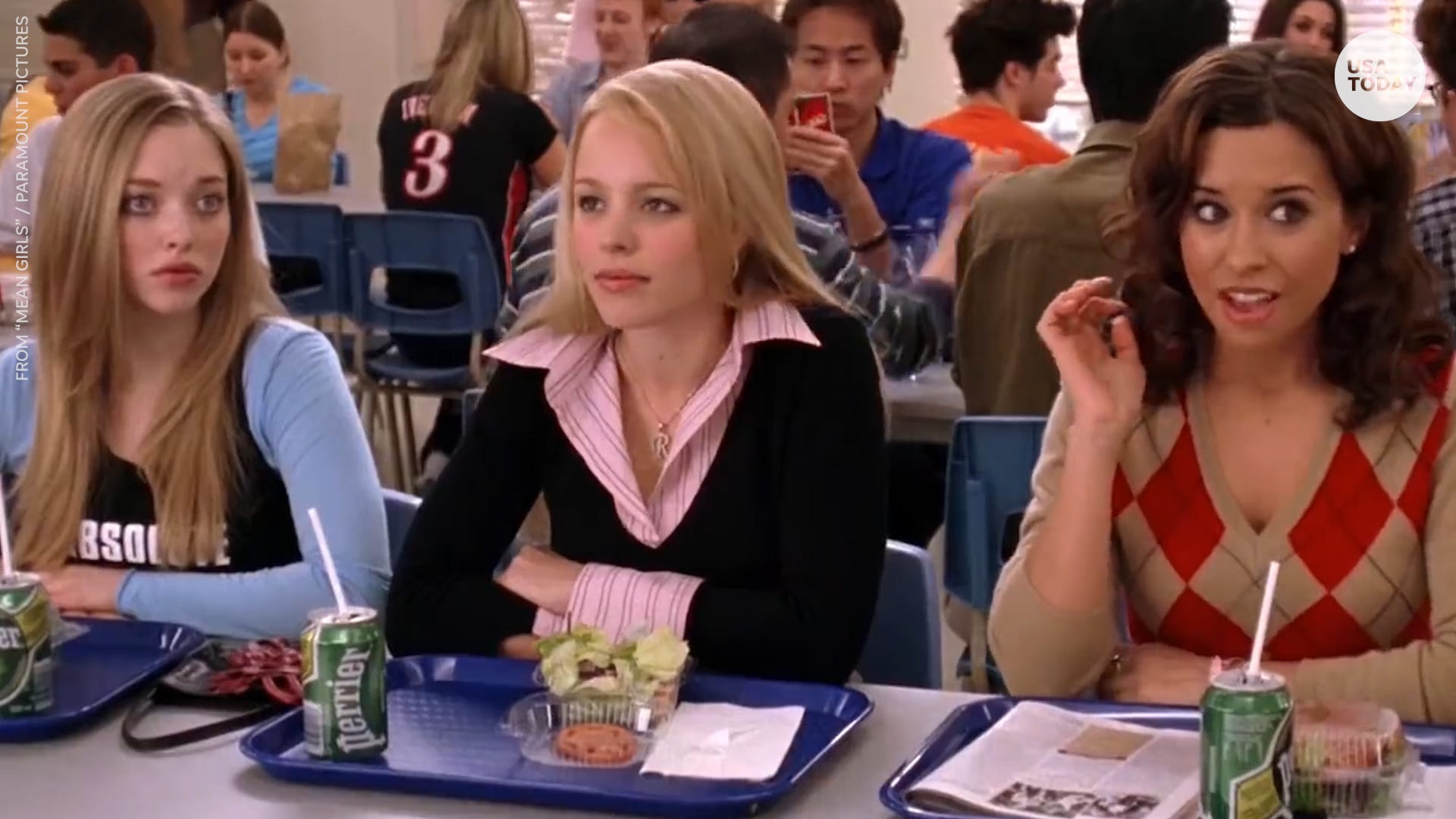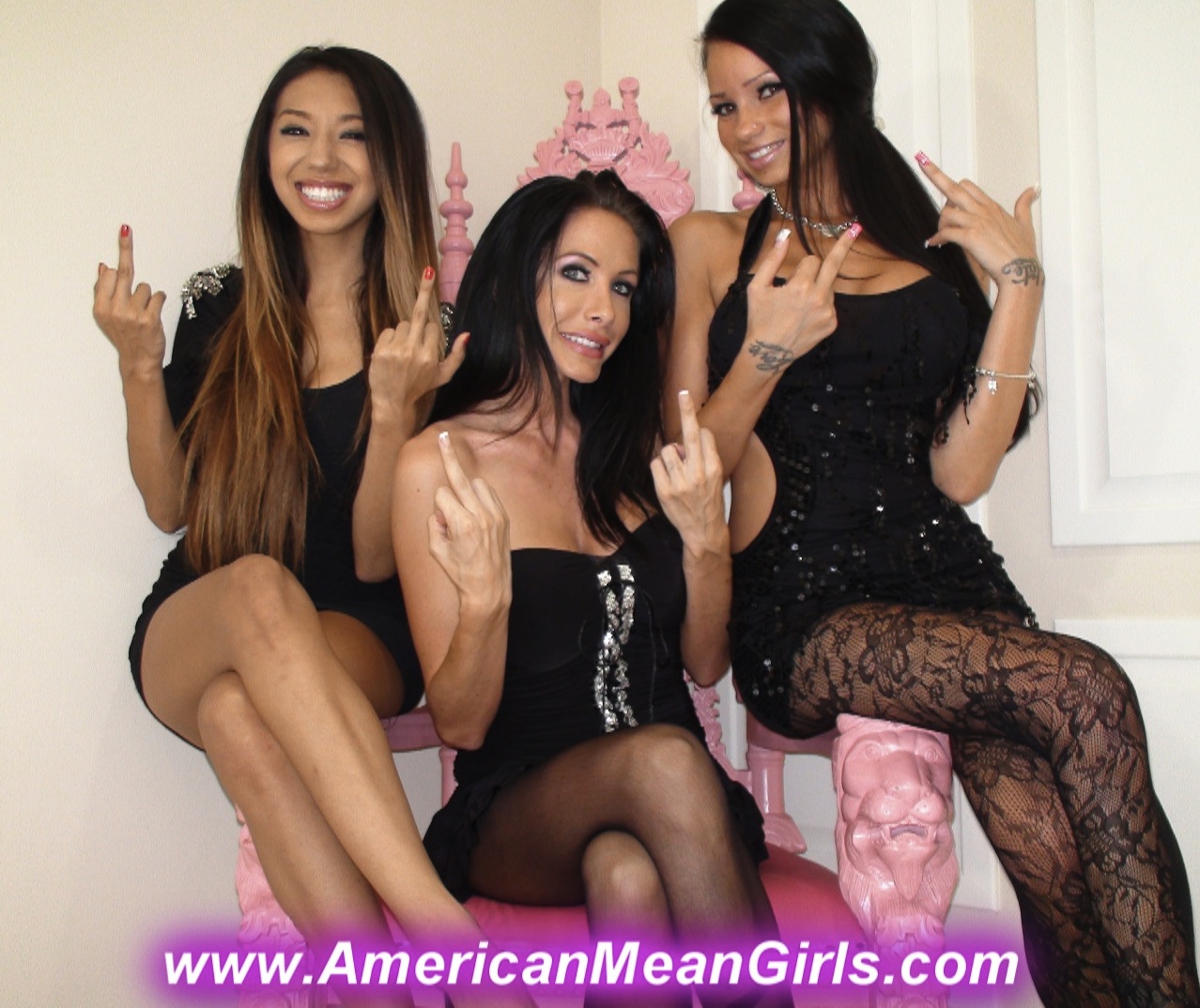American Mean Girls - Social Dynamics Unpacked
The social fabric of our everyday interactions, you know, it's almost like a quiet hum that shapes how we connect, and sometimes, how we don't. We often talk about those particular group behaviors, the ones that create a bit of a ripple in the social pond, perhaps causing some friction or a sense of unease for people around. This kind of dynamic, in some respects, is often associated with what many refer to as "American Mean Girls," a particular type of social behavior that has, like, really captured public attention over time.
It's that feeling when you walk into a room, and you can just sense the unspoken rules, the subtle power plays that are, actually, always happening, even if you don't really see them right away. These group behaviors, often characterized by exclusion or subtle forms of control, tend to be a reflection of broader societal patterns. We see these patterns play out in different settings, from casual chats among friends to more public discussions, influencing how people feel about their place in a group or community.
Understanding these social currents, and how they shape our collective experiences, can give us a clearer picture of human interaction. It's not just about what people say, but how they say it, and what's left unsaid, that really tells the story. This article will explore some facets of these social dynamics, drawing parallels from everyday observations to shed some light on the world of "American Mean Girls" and their particular ways.
Table of Contents
- Gossip and Social Currents
- Do American Mean Girls Shape Public Discussions?
- The Social Arena of Achievement
- How Do American Mean Girls Handle Differences?
- The Politics of Belonging
- Who Gets Picked and Who Does Not?
- How Do American Mean Girls View Societal Rules?
- Observing the Social Scene
Gossip and Social Currents
Social interactions, you know, often involve a lot of talking, and sometimes, that talking turns into discussions about others. It's almost like a constant hum of chatter, where people share their thoughts and observations. Think about how two American families might get into a discussion that feels, in a way, "too hot for swamp gas." That phrase, you know, it really paints a picture of a situation that's just a bit uncomfortable, maybe even a little suffocating, because of the intensity of the talk.
This kind of intense discussion, where opinions clash or rumors spread, is something that "American Mean Girls" tend to be very familiar with. They often thrive in environments where information, or even misinformation, moves quickly. It’s not just about sharing news; it's about shaping perceptions, about making sure certain ideas or narratives take hold. A discussion that's "too hot" for its setting could easily be one that involves the kind of social maneuvering that defines these groups.
The very act of discussing others, or forming opinions based on group consensus, can create these "hot" social atmospheres. It's like, a natural part of how some social groups operate. The way people talk about others, whether it's about a sports player like Florida men’s basketball senior guard Walter Clayton Jr, or just everyday folks, can reveal a lot about the social currents at play. These conversations, honestly, sometimes set the tone for who is in and who is out, who is celebrated and who is, perhaps, overlooked.
Do American Mean Girls Shape Public Discussions?
It's interesting to consider how various viewpoints, even those that seem quite distant from everyday social circles, can find their way into group discussions. We see, for example, talk about American Marxists and their ideas on pushing prison reform, perhaps even adopting methods from the Russian prison system. This kind of conversation, you know, it might seem far removed from the typical concerns of a social group, but it shows how different ideas can become part of the general chatter.
When "American Mean Girls" engage in conversation, they sometimes pick up on these broader societal topics. They might not delve into the deep details, but they'll often have strong opinions, perhaps echoing what they've heard or what fits their group's general outlook. The idea that "crime will definitely drop when" certain methods are used, for instance, shows a kind of simplistic view of complex problems, which can be characteristic of how some social groups approach big ideas.
These groups, you know, tend to simplify things, making them fit into their existing frameworks. It's like, they're not always looking for nuance, but for clear-cut answers or positions that align with their social identity. So, even if the topic is serious, the way it's discussed can become another way to reinforce group boundaries or express a collective stance, which is something "American Mean Girls" do quite a bit, actually.
The Social Arena of Achievement
In many social settings, there's a constant, more or less, evaluation of performance, whether it's in school, sports, or just everyday life. Think about how a group like Gatorcountry might be live at practices, bringing you a photo, or how people react "after a good week from all." There's this sense of watching, observing, and then judging how well someone or something is doing. This public display of effort and its outcome, you know, really sets the stage for social commentary.
For "American Mean Girls," this arena of achievement and public perception is very important. They often pay close attention to who is succeeding, who is getting attention, and how others are performing. It's not just about the actual achievement, but about the social capital that comes with it. A good week for someone might mean they're suddenly more visible, more talked about, and that, is that, something these groups will certainly notice.
The act of being observed, or having one's efforts captured in a photo, puts people under a kind of social spotlight. This can be a source of both admiration and, sometimes, subtle critique within these social circles. The way these groups react to someone's success, or lack thereof, helps define the social hierarchy and who holds influence, which is a big part of the "American Mean Girls" playbook, if you think about it.
How Do American Mean Girls Handle Differences?
Our society, you know, is full of different viewpoints and symbols, and sometimes these can create friction. Consider the discussion around showing the pride flag on the jumbotron during the national anthem instead of the American flag. For some, this is a real problem, and it's something that resonates deeply with them, along with "a lot of other things." This kind of strong reaction to symbols and their display shows how identity and group loyalty play a big part in public sentiment.
For "American Mean Girls," these kinds of social issues, where symbols represent different values or groups, can become focal points for their discussions. They often have clear ideas about what is acceptable and what is not, what is "the problem" and what is not. Their opinions, you know, tend to be shaped by what the group collectively believes, and they can be quite firm in those beliefs, reflecting a strong sense of group identity.
The way these groups react to perceived challenges to their norms, or to symbols that don't align with their own, can be quite telling. It's not just about the flag itself, but what it represents to them and their social circle. This kind of collective stance on social issues, where "it is with me also but so are a lot of other things," shows how "American Mean Girls" often align their views to maintain group cohesion and define their collective identity, which is, basically, how they operate.
The Politics of Belonging
In any group setting, there's always a process of selection, of deciding who is in and who is not. Think about how, in sports, "three were selected on offense, two on defense, and two on" some other aspect of the team. This process of choosing, of picking certain individuals for certain roles, is a very clear example of how groups form and how roles are assigned. It's a fundamental part of how social structures come together.
For "American Mean Girls," this idea of selection and exclusion is, like, absolutely central to their social dynamics. Their groups are often defined by who gets to be a part of them and who is left out. The process of picking, whether it's for a team, a social event, or just a lunch table, mirrors the subtle ways these groups establish their boundaries and maintain their perceived status. It's a constant, perhaps even unspoken, process of evaluation.
The feeling of being selected, or not being selected, has a huge impact on individuals within these social environments. It creates a sense of belonging for some and a feeling of being on the outside for others. This kind of social sorting, which determines who is "on offense" or "on defense" in the social game, is a key characteristic of how "American Mean Girls" operate, really, shaping the social landscape around them.
Who Gets Picked and Who Does Not?
The act of choosing, or making selections, is a very common part of our lives, from picking teammates to deciding who gets to join a particular activity. This process, you know, naturally creates a dynamic where some people are included and others are not. It’s like, when you see a sports team where "three were selected on offense, two on defense, and two on" another position, it highlights the choices made and the roles assigned.
Within the social circles often associated with "American Mean Girls," this selection process is a bit more subtle, but just as powerful. It's not always about formal tryouts; it's about social cues, shared interests, and perceived status. The decisions about who is "in" the inner circle and who remains on the periphery are, basically, made through these unspoken selections. It's a constant, quiet negotiation of who belongs.
This dynamic of who gets picked and who does not, really, shapes the social environment. It creates a sense of hierarchy and can influence how individuals feel about their place in the group. For "American Mean Girls," controlling who is selected for various social activities or even just for a conversation is a way to exert influence and maintain their group's particular social order, which is, obviously, very important to them.
How Do American Mean Girls View Societal Rules?
When we talk about societal structures, you know, we sometimes hear ideas that seem quite rigid or even a bit extreme. For example, the concept that American Marxists might push for prison reform by adopting methods from the Russian prison system, with the belief that "crime will definitely drop when" this happens, shows a very particular outlook on how society should be managed. It's a strong, perhaps even absolute, way of thinking about control and consequences.
This kind of black-and-white thinking, where solutions are seen as definitive and outcomes are guaranteed, can sometimes be mirrored in the social world of "American Mean Girls." They often create their own sets of rules, their own social "prisons" or boundaries, that dictate behavior within their group. Breaking these unspoken rules can lead to social "punishment," a kind of exclusion or shunning that, in their view, makes sure "crime will definitely drop" in their social circle, so to speak.
Their discussions, like the one about Trump thinking American workers want less paid holidays, can also show this tendency to adopt strong, perhaps simplified, views on complex issues. It's not always about deep policy analysis; it's about aligning with a particular stance that reinforces group identity or a shared worldview. This way of seeing things, where clear-cut answers are preferred, is a characteristic of how "American Mean Girls" tend to approach both social and broader societal rules, really.
Observing the Social Scene
Everyday life is full of observations, you know, from watching a basketball game to seeing how people react to symbols. The idea of Gatorcountry being live at practices and bringing you a photo, or the discussion about showing the pride flag on the jumbotron, these are all moments of public display and public reaction. We're constantly taking in information about what's happening around us, and how others are responding to it.
For "American Mean Girls," observing the social scene is, like, a core activity. They're very attuned to who is doing what, who is saying what, and how these actions reflect on social standing. Whether it's the performance of a senior guard like Walter Clayton Jr., or the collective mood "after a good week from all," these observations provide the raw material for their social commentary and the shaping of their group's opinions.
These observations also extend to how people express their identities or affiliations. The debate about the pride flag versus the American flag, and the sentiment that "it is with me also but so are a lot of other things," shows how deeply individuals can feel about symbols and their meaning. "American Mean Girls" often pick up on these sentiments, using them as points of discussion or as ways to define their own group's values, which is a big part of their social interaction.
A brief look back at these points shows how various everyday observations, from family discussions to sports and public symbols, can shed light on the social dynamics often associated with "American Mean Girls," highlighting their involvement in gossip, group formation, and the shaping of opinions on social and societal matters.

4 iconic 'Mean Girls' moments that we won't forget

American Mean Girls - EroFound

How Mean Girls Influenced Teen Comedies